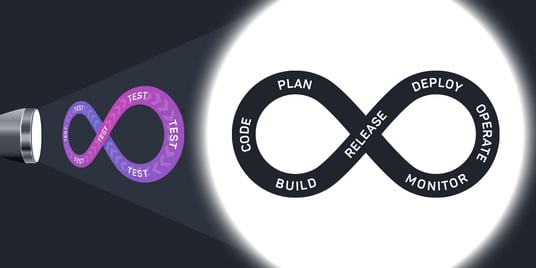On a high level, DevOps is a mindset that rethinks software development strategy through collaboration, automation, and measurement. With all aspects (engineering, product, quality, and support) of the software development life cycle interconnected, organizations are able to continuously create and improve software, thus avoiding high-stress deployment periods.
But the reality is often far from the ideal. Though DevOps has existed for years, most companies are still navigating the road to successful adoption due to cultural and organizational challenges. Managing a long-term transformation that impacts the workflow of every person on the team is hard, particularly for roles that use very little automation and data prior to DevOps adoption. Luckily, the path to DevOps isn’t an all-or-nothing scenario. Organizations can move at their own pace, pick the easiest processes/workflows to automate first, and ultimately choose their DevOps adventure.
Harnessing Collaboration to Drive Automation
The key to unlocking sustained DevOps adoption? Building a coalition of ambassadors and coaches that can guide change on a peer-to-peer level through the DevOps pipeline. These early adopters can test drive new technologies, develop best practices, and establish workflows that suit the team, product, and culture. This way, DevOps has a larger number of champions throughout the organization and has more momentum for long-term change.
The Skills to Lead DevOps Pipeline Automation
As the glue between engineering, product, and the end user, software testing is an ideal opportunity for experimenting with early DevOps processes. Testers need to communicate with everyone from customer support, developers, and product managers while also managing a variety of tasks that can be automated. Quality assurance teams also have a diverse range of skills, including test automation engineers that code on a regular basis and manual testers, who specialize in the user experience. That range of skills makes quality teams an ideal place to start implementing automation since they can ensure that new tools are accessible to everyone in the SDLC, not just those who code.
Software Testing: A Shared Automation Opportunity
Mabl’s 2021 State of Testing in DevOps Report found that successful DevOps teams are differentiated by one factor: a culture of quality. This means that testing is distributed across the DevOps pipeline, starting in the code stage. As an effective test automation strategy is developed, software testing evolves into a continuous process that engages the entire team from developers and QA to customer success. It’s one of the few touchpoints that unites the whole organization, which makes it an ideal starting place for DevOps adoption. By using test automation as an entry point into a mostly or fully automated DevOps pipeline, software organizations can avoid the typical pitfalls of DevOps adoption, such as uneven automation deepening work silos, lost momentum, or a lack of early impact.
Connecting DevOps and Automation Success to Business Success
Test automation - and quality strategy overall - is also an ideal way to connect a successful DevOps transformation to business success. The 2021 Testing in DevOps Report found that test coverage is directly connected to customer satisfaction, which is a positive indicator for business growth and customer loyalty.
When early automation efforts return positive results, the team builds enthusiasm and momentum for DevOps adoption, even when it means learning new tools or processes. Celebrating these early wins is an essential part of managing the most significant obstacle to DevOps: organizational change. An impact on customer happiness not only grows support for DevOps initiatives from company leadership, but also illustrates the impact of automation to those directly impacted by the changes.
Start Small, Scale Smart
Partnering with quality teams to test drive early pipeline automation efforts builds an internal team of champions that work with the entire organization. As automated testing is implemented, QA is able to build a library of best practices, work through any issues that arise, and eventually coach the rest of the team through the test automation process to build a culture of quality. This way, everyone in the SDLC is able to gain experience with automation tools, see the impact of their work, and become more comfortable with an automated, collaborative development pipeline that produces high-quality software quickly. The road to DevOps isn’t always easy, but building a roadmap that relies on team collaboration, early wins, and sustained impact is essential to long-term success.
Dive into the trends, technology, and changes driving DevOps adoption in the full State of Testing in DevOps Report.






